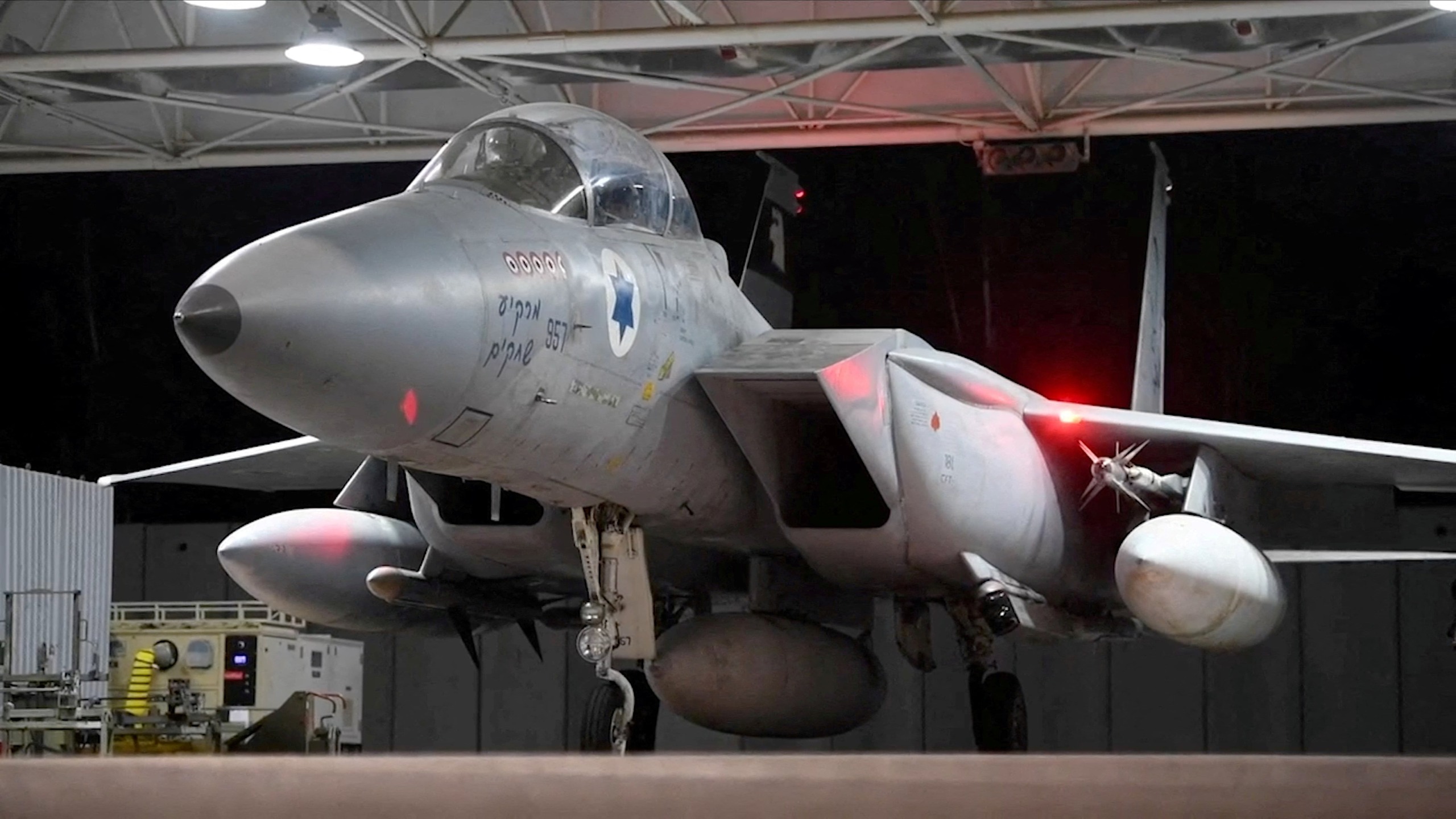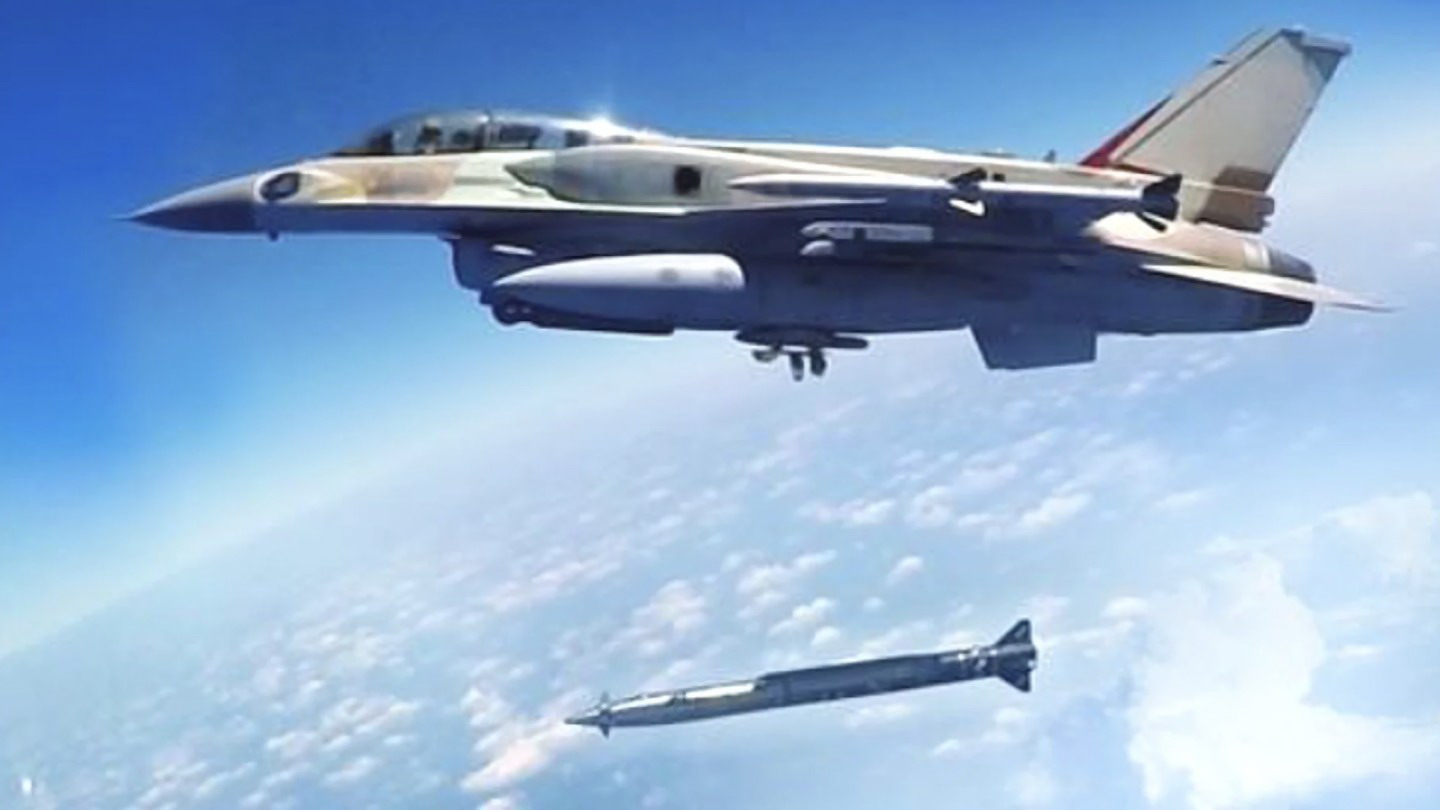
An Israeli plane prepares to attack Iran on October 26.
Israel’s attack on Iran on October 26 used multiple air-launched ballistic missiles, leading to increased demand for weapons that are fast, accurate and difficult for opponents to defend against, according to a Reuters analysis on November 10.
Israel's effective use is expected to increase demand for the weapon, although many major powers have previously focused more on cruise missiles and glide bombs.
Bypass many defense systems
The Israeli Defense Forces said the attack, carried out in three waves, damaged Iranian missile factories and air defense systems. Satellite images showed that among the targets were buildings used in Iran's nuclear program, according to researchers.
Tehran protects such targets with a variety of air defense systems, according to Justin Bronk, an expert on air power and technology at the Royal United Services Institute (RUSI).
Cruise missiles are more vulnerable to integrated and dense air defense systems than ballistic missiles. But ballistic missiles are typically fired from known launch points and most cannot change course.

An Israeli-made Rampage missile-launching fighter jet
Experts say that high-speed, precision air-launched ballistic missiles like the Rampage, developed by Elbit Systems (Israel) and Israel Aerospace Industries, can solve the problems faced by ground-based ballistic missiles and air-launched cruise missiles.
Jeffrey Lewis, an expert at the Middlebury Institute of International Studies in California, said the main advantage of air-launched ballistic and cruise missiles is the speed to overcome defenses. "The problem of precision strikes seems to have been largely solved," he said.
Increased interest?
Ground-launched ballistic missiles, which Iran has used to attack Israel twice this year, are as common in many countries’ arsenals as cruise missiles. Russia and Ukraine have also used ground-launched ballistic missiles in their conflict in Ukraine.
Air-launched ballistic missiles, on the other hand, have a mobile launch point, which gives them an advantage. “The advantage is that when launched from the air, they can come from any direction, which complicates the defense mission,” said Uzi Rubin, an expert at the Jerusalem Institute for Strategy and Security, one of the architects of Israel’s missile defense system.
Because air-launched ballistic missiles combine guidance, warheads and engines, many countries with precision weapons already possess the capabilities to pursue them, according to a defense industry executive who spoke anonymously because of the sensitivity of the issue.
“This is a clever way to take a common set of technologies and components and turn it into a very interesting new weapon, giving them more capabilities, and therefore more options, at a reasonable price,” according to the leader.
Several countries, including the US and UK, tested aircraft-launched ballistic missiles during the Cold War. However, to date, only Israel, Russia and China are known to have deployed such weapons.
However, this weapon is not invincible against air defense systems. In Ukraine, the Patriot PAC-3 missile system manufactured by Lockheed Martin (USA) has repeatedly intercepted Russia's Kinzhal missile.
America is not interested?
The US has tested a hypersonic air-launched ballistic missile, the Lockheed Martin AGM-183, but has not received funding for fiscal 2025. Given its arsenal of cruise missiles and other long-range strike weapons, Washington appears to have little interest in the missile. An anonymous US Air Force official confirmed that the air-launched ballistic missile is not currently in service with the service. Raytheon has also tested the SM-6 missile in an air-to-ground role, although the missile was originally repurposed as an air-to-air and surface-to-surface missile, according to an anonymous US defense technical analyst.
Source: https://thanhnien.vn/nhu-cau-ten-lua-dan-dao-khong-doi-dat-gia-tang-vi-cang-thang-israel-iran-185241110165716734.htm





![[Photo] General Secretary To Lam attends the 80th Anniversary of the Cultural Sector's Traditional Day](https://vstatic.vietnam.vn/vietnam/resource/IMAGE/2025/8/23/7a88e6b58502490aa153adf8f0eec2b2)


![[Photo] Prime Minister Pham Minh Chinh chairs the meeting of the Government Party Committee Standing Committee](https://vstatic.vietnam.vn/vietnam/resource/IMAGE/2025/8/23/8e94aa3d26424d1ab1528c3e4bbacc45)



























































































Comment (0)